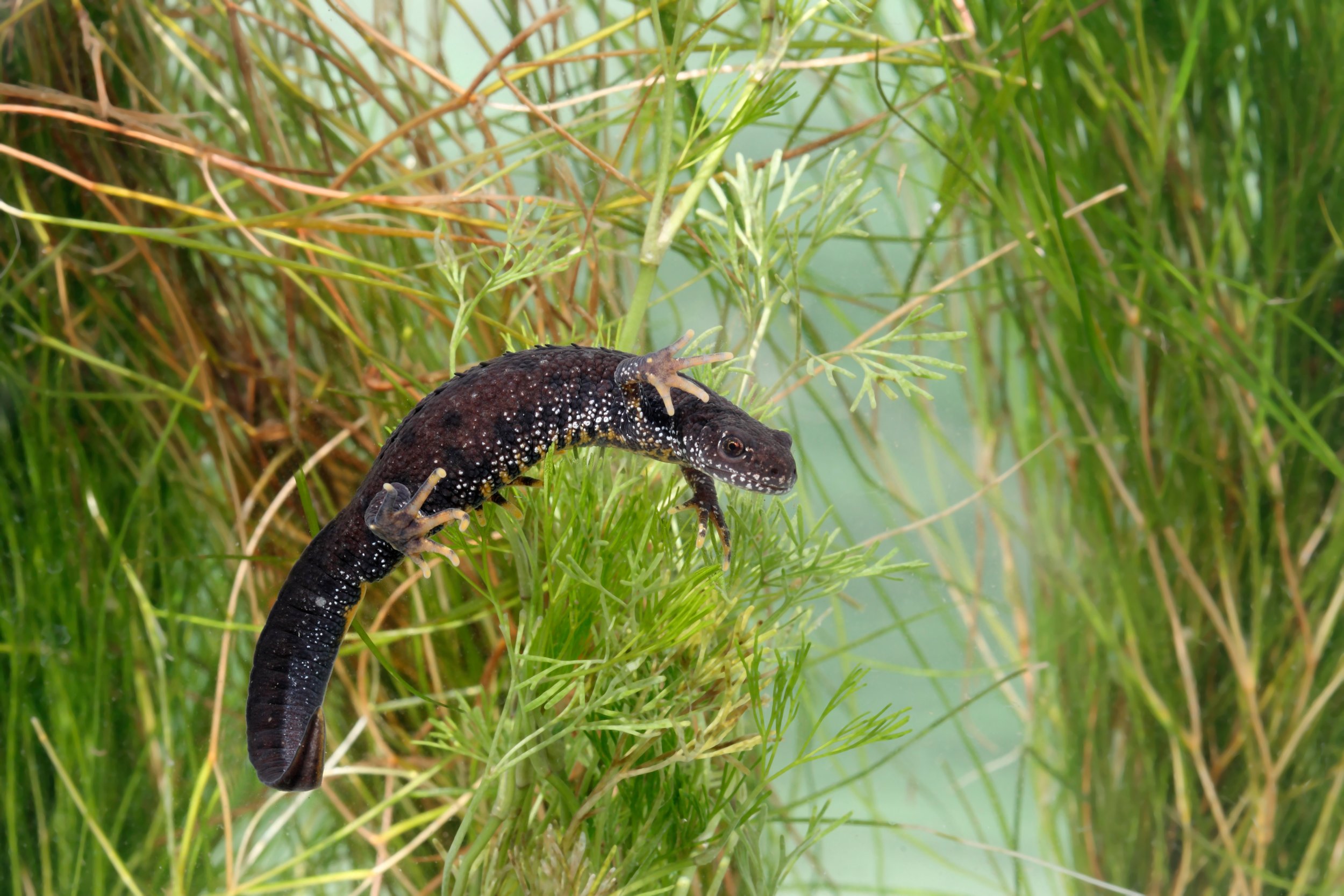
Great Crested Newt Surveys
Why are great crested newt surveys required?
Great crested newts (GCN) are a highly protected species under the Wildlife and Countryside Act 1981. GCN surveys are required for planning permission in the UK to assess the potential impacts of proposed developments on great crested newt populations, to inform habitat management plans, assess the impact of development projects and ensure appropriate mitigation measures are in place to protect the newts and their habitats.
What happens during a GCN survey?
There are 3 native newt species found in the UK. The Great Crested Newt (GCN) is the largest and least common and although widespread throughout the UK, their numbers are very low in the rest of Europe. As a result, they are classed as a European Protected Species, receiving a high level of protection.
We are licensed to conduct both Habitat Suitability Index (HSI) assessments and presence/absence surveys. HSI assessments use a points system to rate the potential for GCN to be breeding within a pond, ditch or lake, but can only be used as a rough indicator and only precludes a presence/absence survey if a pond receives an exceptionally low score.
A presence/absence survey can only be conducted by a Natural England licensed surveyor and must be carried out between mid-March and mid-June during suitable weather conditions. The techniques used include bottle trapping, egg searching, torch surveying and netting methods.
Services are also provided for translocating newts, erecting newt proof fencing and submitting protected species licenses.
Great Crested Newt Survey Schedule
Great crested newt presence / absence surveys take place between mid-March and mid-June, during the active breeding season.
View our full survey calendar below:
Explore our other services
Explore our other services, including protected species surveys, biodiversity net gain assessments and more.
-
Preliminary Ecological Appraisals (PEA)
Ecological Impact Assessments (EcIA)
Environmental Impact Assessments (EIA)
-

